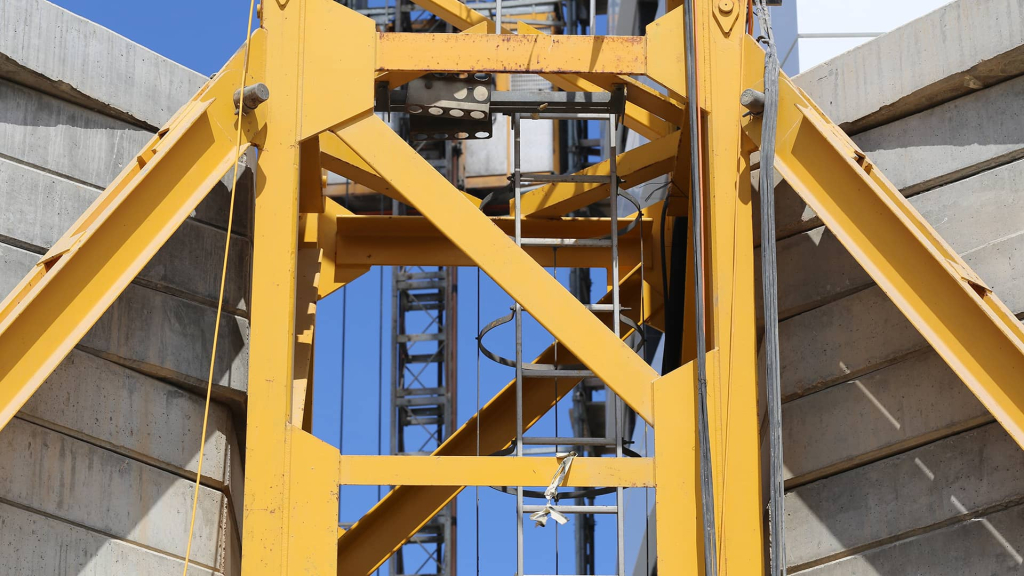
Financing Satellites – Legal and Commercial Challenges – Part 2: Can the Space Assets Protocol Provide a Way Forward?
In the first part of this series, we looked at the key legal and commercial challenges associated with satellite financing. The space industry has experienced a remarkable growth in recent years, with projections indicating an even greater and rapid expansion to over $1 trillion by 20401. Satellite broadband Internet access offers the most significant short-term and medium-term opportunities.
In this complex market, financings are done through a variety of instruments, frequently with the support of export credit and development financial institutions. In this second article we take a close look at (I) the potential role of the Space Assets Protocol to the Cape Town Convention as a legal solution designed to establish a clearer and harmonised framework for taking, perfecting, and enforcing security interests in satellite assets, and (II) the rise of national legislations on this topic, with a specific focus on Italy’s First Space Economy Law, enacted on 25 June 2025.
I. Overview of the Cape Town Convention and the Space Assets Protocol
The Cape Town Convention
The Cape Town Convention on International Interests in Mobile Equipment is a multilateral treaty designed to harmonise and standardise the legal framework governing transactions involving high-value, mobile equipment. Its primary objective is to facilitate asset-based financing.
The Convention is supplemented by four distinct protocols, each tailored to a specific category of mobile equipment:
- the Aircraft Protocol (2001);
- the Railway Rolling Stock Protocol (2007);
- the Space Assets Protocol (2012); and
- the Mining, Agricultural and Construction Equipment Protocol (2019).
Of these, only the Aircraft and Railway Protocols have entered into force, respectively in 2006 and in 2024. The Space and MAC Protocols, while adopted, are not yet in effect pending sufficient ratification.
Adopted on 9 March 2012 in Berlin under the auspices of UNIDROIT (the International Institute for the Unification of Private Law), the Space Assets Protocol (officially “Protocol to the Convention on International Interests in Mobile Equipment on Matters specific to Space Assets“) requires ten ratifications before its entry into force. As of the date of this article, the Space Assets Protocol has been signed by five countries (Burkina Faso, Germany, Saudi Arabia, Paraguay and Zimbabwe), but no country has ratified it2.
The main objectives of the Cape Town Convention are the followings:
- supporting the acquisition and financing of high-value mobile equipment by establishing an internationally recognised system of security interests, enforceable across all signatories of the Convention;
- providing lenders with a comprehensive set of default and insolvency remedies, including expedited interim relief where default is evident, pending the final resolution of their claims;
- creating an electronic international registry for recording international interests, which will give notice of their existence to third parties and enable the creditor to preserve its priority against subsequently registered interests and against unregistered interests and creditors in the debtor’s insolvency; and
- addressing the specific requirements of each industry sector through tailored provisions in the applicable Protocol.
The Space Assets Protocol
The Space Assets Protocol is a specialised instrument developed within the framework of the Cape Town Convention. Its purpose is to extend the Convention’s asset-based financing model to the space sector, covering uniquely identifiable space assets such as satellites, transponders, and other equipment capable of being placed in orbit.
Acknowledging the capital-intensive nature of the space industry and the legal uncertainties that have traditionally deterred private investment, the Protocol establishes a uniform, predictable international legal regime for recognising, registering, and enforcing security interests in space assets. It adapts key mechanisms of the Cape Town Convention (such as the creation of international interests, creditor remedies in case of default, and the use of an electronic international registry) to the specific legal and operational complexities of outer space.
Crucially, the Space Assets Protocol does not override existing financing models or impose mandatory requirements on space operators.
Rather, it offers a voluntary legal framework for structuring cross-border secured transactions involving space assets. Indeed, the space operators are not obliged to use the Space Asset Protocol but are free to decide whether to constitute an international interest or not.
The key element of this regime are the following:
(1) Establishment of an International Registry for Space Assets:
One of its key innovations is the establishment of an International Registry for Space Assets, enabling creditors to electronically register their interests.
Registration would serve as public notice of an interest to third parties, establishing priority over subsequently registered interests, and protecting the interest against unregistered claims and creditors, including in bankruptcy proceedings.
(2) Set of remedies:
Additionally, the Space Assets Protocol provides a range of remedies (both interim and final) in the case of the occurrence of an event of default or insolvency.
Because of the difficulty of repossession, the Space Assets Protocol notably suggests alternative remedies that allow constructive repossession by gaining control, including: assignment of the debtor’s rights (in particular, of the revenue stream that the debtor is receiving or expects to receive from the space asset), and “Tracking, Telemetry, and Control (TT&C)” of the space asset.
It shall be noted that the Space Assets Protocol was strongly opposed by the satellite industry (ranging from satellite operators and manufacturers to insurers, financiers, and industry associations), claiming that it would lead to increased bureaucracy and make the financing of new satellite projects more difficult and expensive3.
The industry’s opposition to the Space Assets Protocol stands in contrast to the generally recognised success of the Aircraft Protocol, which has been widely ratified and effectively implemented across the aviation sector. The Aircraft Protocol has contributed to lower financing costs, increased legal certainty, and broader access to capital for aircraft operators, particularly in developing markets4.
II. The rise of national legislations
More than a decade after its adoption in 2012, the Space Assets Protocol remains dormant, with no ratification date in sight.
This lack of an operative international regime leaves a legal vacuum. For this reason, States have begun to fill this gap by enacting national legislation aimed at regulating space activities and, in some cases, facilitating investment and financing structures.
(1) Italy’s First Space Economy Law
The most significant and recent development is Italy’s First Space Economy Law, enacted in June 20255. This legislation represents a milestone in Europe and is particularly noteworthy as it combines regulatory clarity with financial support, directly addressing some of the structural barriers to satellite financing. By doing so, it aligns with some of the objectives of the Space Protocol, albeit within a domestic framework.
The main characteristics of Law n. 89 of 13th June 2025 are as follows:
- Authorisation regime: space operators (defined as any entity conducting space activities) must obtain prior authorisation to conduct space activities6 from the designated political authority (typically the Prime Minister), with the Italian Space Agency (ASI) acting as the technical intermediary; space operators will be required to demonstrate compliance with specific technical standards, such as safety, risk management, cyber and physical resilience, and environmental sustainability. Approval may still be withheld on grounds of national security or conflicts with Italy’s core interests;
- Liability and insurance: the law introduces a strict liability regime for space operators, who are liable for damages to third parties, unless proven otherwise. Space operators are also required to maintain a mandatory insurance of up to €100 million per incident, consequently reducing credit risks for lenders by ensuring coverage of third-party liability;
- Registration and transfer of space objects: operators must register all space objects with the National Registry of Space Objects. Transfers of ownership or control require prior authorisation, to ensure traceability and compliance of the space asset with international obligations.
This law also includes financial instruments to support the development of the space industry in Italy. It establishes a multi-year Space Economy Fund, dedicated to research, innovation, and commercialisation. Specific provisions target startups and SMEs, providing financial incentives and preferential access to funding mechanisms.
(2) EU Space Act
Another significant development in European space regulation is the proposed EU Space Act, unveiled by the European Commission in June 2025. Although not expected to enter into force until 1 January 2030, this act aims to harmonise the fragmented legal landscape across EU Member States, reduce administrative burdens, and foster a competitive and sustainable space economy.
It introduces comprehensive rules around safety, resilience, and environmental sustainability, including mandatory debris mitigation, cybersecurity standards, and lifecycle environmental assessments for space operators.
For further insights, we have published on 8 July 2025 an article entitled “EU Space Act Proposal Lifts Off”7 which dives into the regulatory implications and strategic considerations for operators.
Conclusion
We have briefly highlighted the financing challenges faced by the space industry, particularly in securing traditional and asset-based funding. These challenges span legal, regulatory, and practical domains. Though complex, these issues are not insurmountable, and a range of solutions exists.
States are starting to enact their own regimes, with the objective of reducing uncertainty and creating an environment in which both operators and financiers can engage with greater confidence. However, the proliferation of national laws risks creating a fragmented legal landscape, where operators and lenders face differing rules depending on jurisdiction.
The Space Assets Protocol aims to bring clarity to the inherently uncertain realm of outer space. It is true that the Protocol has limitations: it does not fully address regulatory control issues, and it relies on national declarations and local court systems, which may lead to a fragmentation or renationalisation of protections. The absence of provisions for floating charges may also hinder the Space Assets Protocol’s applicability to the financing of large-scale satellite constellations.
It however provides a solid foundation.
As the space economy evolves, instruments like the Space Assets Protocol may prove essential in supporting both conventional project finance and the growing demand for asset-based financing in satellite systems and beyond.
Footnotes:
- Tech Helps Manufacturing Birth Its Digital Twin | Morgan Stanley
- Status – UNIDROIT
- Global Satellite Industry denounces UNIDROIT Protocol – SpaceNews
- Cape Town Treaty on Cross-Border Financing of Aircraft, Helicopters and Aircraft Engines, Takes Effect Today (Mar. 1) | EXIM.GOV
- Italy Launches its First Space Economy Law. An Initial Step Towards a Regulated and Competitive Space Sector – Lexology
- Pursuant to Italy’s First Space Economy Law, “Space activity” means the launch, release, orbital management, and re-entry of space objects, including the disposal of such objects from Earth orbits and the removal of debris; in-orbit services; the assembly and use of orbiting space stations; the production of objects in outer space and on celestial bodies; the exploration, extraction, and utilization of natural resources in outer space and on celestial bodies, in accordance with international legal instruments; the launch, flight, and short- or long-term stay of living beings in outer space and on celestial bodies; activities conducted via stratospheric platforms and sounding rockets; and any other activity carried out in outer space and on celestial bodies by operators subject to the present law.
- EU Space Act Proposal Lifts Off | HFW










